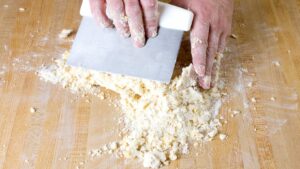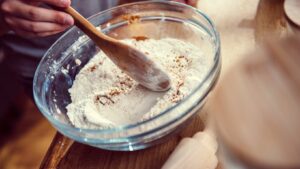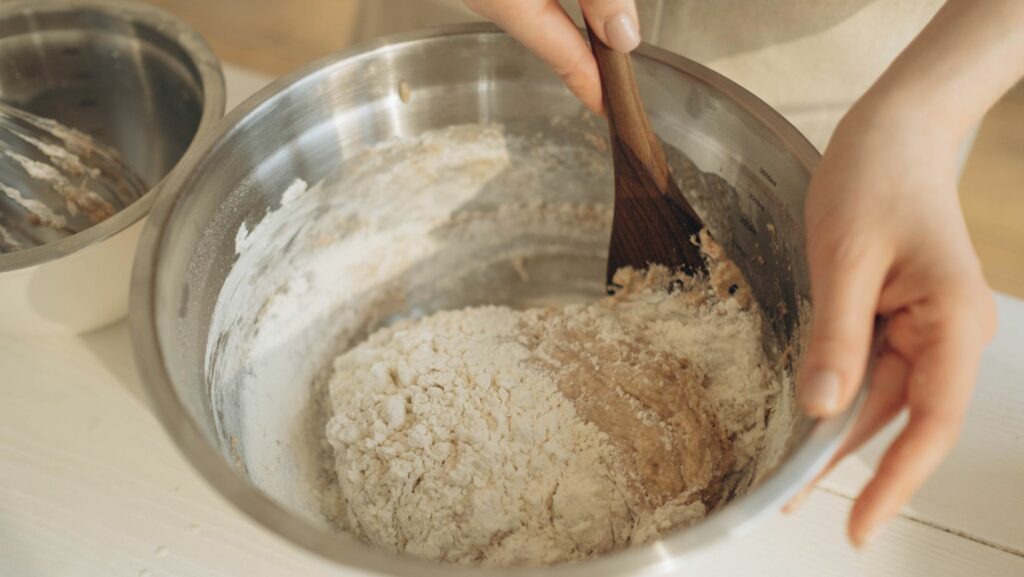The biscuit mixing method is a time-honored technique that transforms simple ingredients into flaky, buttery perfection. Whether you’re a seasoned baker or a kitchen novice, mastering this method can elevate your baking game. It’s all about the delicate balance of cutting in cold fats, handling the dough with care, and baking to golden perfection.
Dive into these expert strategies and discover how to create biscuits that are not only visually appealing but also melt in your mouth. With practice and a bit of patience, you’ll be serving up the best biscuits in no time.
What Are The 3 Tips, Tricks, And Techniques About Using The Biscuit Mixing Method?

The biscuit mixing method involves specific steps to create tender and flaky biscuits. This technique requires cold ingredients, careful mixing, and precise handling. Bakers ensure that flour, baking powder, salt, and cold fats are combined until they resemble coarse crumbs. Milk or buttermilk is then added to form a dough that is usually sticky.
Cold fat and minimal handling contribute to the dough’s flakiness. Cold butter or shortening creates pockets in the dough, resulting in a layered texture when baked. Achieving this effect requires the dough to stay cool, limiting the fat from warming up and incorporating too thoroughly. Bakers handle the dough gently to prevent overmixing, which can lead to dense biscuits.
Practical application of these methods provides bakers with consistently successful biscuit results. By understanding these essential steps, they harness the potential of basic ingredients to produce exceptional baked goods.
Essential Tips For Perfect Biscuits
Understanding the fundamental tips of the biscuit mixing method enhances biscuit outcomes. These essential tips focus on ingredient selection, butter temperature, and dough texture.
Choosing The Right Ingredients

Selecting quality ingredients affects biscuit taste and texture. All-purpose flour offers a reliable base, while pastry flour adds tenderness. Baking powder with no aluminum provides a cleaner flavor. Fresh, unsalted butter ensures optimal taste control. Buttermilk contributes acidity, enhancing leavening and adding a subtle tang.
Importance Of Cold Butter
Maintaining cold butter is vital for flaky biscuits. Cold butter holds its shape during mixing, creating fat pockets that result in layers. For best results, refrigerate butter until right before use. Grating or cubing it helps distribute it evenly, without overworking the dough.
Achieving The Perfect Dough Texture
The dough’s texture impacts the final biscuit structure. The dough should be sticky but manageable; overmixing leads to tough biscuits. Gently fold and pat the dough instead of kneading. Aim for a dough thickness of about 3/4 inch to ensure proper rising during baking.

Tricks To Enhance Flavor And Texture
Incorporating flavor and texture enhances biscuits significantly, taking them from ordinary to extraordinary.
Incorporating Additional Ingredients
Adjusting the recipe with diverse ingredients can enrich biscuit taste and texture. Adding herbs like rosemary or thyme introduces aromatic elements. By mixing in shredded cheese, the biscuits gain a savory depth which pairs well with robust soups. Including nuts or seeds like sunflower or poppy seeds adds a satisfying crunch. Sweet variations, such as blueberries or cranberries, create delightful breakfast or dessert options.
Mastering Baking Time And Temperature
Precise control of baking time and temperature ensures ideal biscuit texture and flavor. Preheated ovens set at 425°F (218°C)are common for optimal results but can vary slightly depending on the oven’s performance. Baking biscuits until golden brown, typically 12-15 minutes, achieves the right balance between a crispy exterior and fluffy interior. By rotating the baking sheet halfway through, heat distribution becomes consistent, avoiding any uneven browning.
Mastering the biscuit mixing method opens up a world of delicious possibilities for any baker. By focusing on cold ingredients, gentle handling, and precise techniques, bakers can consistently produce biscuits with the ideal flaky texture and rich flavor. The method’s versatility allows for creative variations, ensuring that every batch can be uniquely tailored to personal tastes. With these insights and practical tips, anyone can confidently create exceptional biscuits that delight both the eye and the palate.



